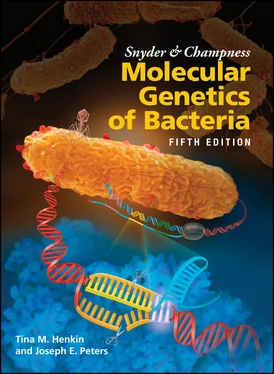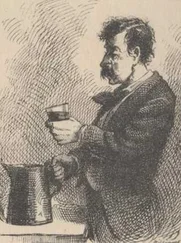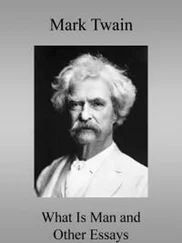In chapter 6, we expanded the discussion of natural transformation and its regulation to include additional comparative information about how these systems vary in different groups of organisms. We consolidated the discussion of lytic and lysogenic bacteriophages and their roles in transduction of bacterial DNA as chapter 7. We organized the information on phage biology based on the different functions required for phage infection and replication, and followed this with a discussion of phage genetics, their use in bacterial genetic transfer, and their roles as tools for molecular biology.
We streamlined chapter 8, “Transposition, Site-Specific Recombination, and Families of Recombinases,” to make room for additional families of elements including the exciting and still somewhat enigmatic HUH transposons, as well as group II mobile introns, and an advanced appreciation of the interrelationship between mobile elements and host DNA replication. Transposons continue to provide an important tool in genomics, and mobile genetic elements in general provide the most significant mechanisms for the transfer of antibiotic resistance. As the spread of antibiotic resistance is slowly nullifying the effectiveness of antibiotics worldwide, understanding the mechanisms of this spread is more important than ever. Chapter 9, “Molecular Mechanisms of Homologous Recombination,” continues to be grounded in the central role that homologous recombination plays in the repair of DNA double-strand breaks. We expanded the chapter to include a better appreciation of the multiple pathways used to load the RecA recombinase onto different types of DNA substrates.
We broadly updated chapter 10, “DNA Repair and Mutagenesis,” to reflect our increased mechanistic understanding across many DNA repair systems, as well as information on how mechanisms established in bacterial systems continue to contribute to our understanding of disease in humans. We extensively updated chapter 11, which focuses on mechanisms of gene regulation of individual genes and operons, to include new information as the field continues to advance. In chapter 12, we then applied the principles learned in chapter 11to global regulatory systems that regulate multiple sets of genes and operons, often in response to multiple regulatory inputs. Bacillus subtilis sporulation, a complex developmental system, is presented in depth as a final example that integrates many of the different mechanisms that are introduced in chapters 11and 12.
Chapter 13, “Genomes and Genomic Analysis,” is a new chapter that consolidates relevant topics previously found elsewhere in the book and provides considerable new information on this topic. We provide background on the multiple mechanisms used for DNA sequencing, including the newest generations of high-throughput sequencing strategies. Having hundreds of thousands of bacterial genomes has allowed us to gain a better understanding of how genomes are organized as well as the relationship between core genes and genes acquired by horizontal gene transfer. The chapter also provides basic information on genome annotation and comparative genomics. Chapter 13further presents an expanded picture of numerous systems that bacteria use to guard against horizontal gene transfer. Although horizontal gene transfer is by far the most important mechanism for evolution in bacteria and archaea, it also provides the greatest vulnerability, with the relentless onslaught of bacteriophages and mobile elements that can sap cellular resources or inactivate important or essential host genes. Significantly, host defense systems also provide the most important tools ever developed for molecular biology. The new chapter provides expanded background on diverse restriction endonucleases and the important roles they play in molecular biology. We cover the variety of tools that are available for cloning and gene assembly, as well as the advantages and disadvantages of these techniques to help guide the investigator. These techniques allow never-imagined possibilities for quickly and accurately constructing synthetic DNA fragments for testing ideas or allowing advances in engineering, including assembling entire bacterial genomes. We greatly expanded the section on CRISPR/Cas systems and chose the Cas9 system, important in many applications in a multitude of model systems and human genome engineering, to illustrate on the book’s cover. CRISPR/Cas systems are very diverse, falling into six distinct types and tens of subtypes. We provide the reader with the background needed to understand how these fascinating systems evolved, the role they play in the natural environment, and the massive promise they hold in genome engineering.
We continue to be indebted to a large number of individuals for their help, talking through ideas, sharing insights from their area of expertise, or reading over sections for accuracy and clarity. Other individuals have alerted us to errors, suggested areas to include, or provided graphics. However, if errors remain in the text, they are our own.
We acknowledge those whose comments on earlier editions have carried over to the current edition. In addition, we thank Esther Angert, Melanie Berkmen, Briana Burton, Druba Chattoraj, Mick Chandler, Pete Christie, Alan Grossman, Alba Guarné, Claudia Guldimann (and the Zürich book club), John Helmann, Laura Hug, Ailong Ke, Bénédicte Michel, Kit Pogliano, Lise Raleigh, Phoebe Rice, Jim Samuelson, Mark Sutton, Anthony Vecchiarelli, Bob Wiess, Steve Winans, Wei Yang, and Steve Zinder.
It was a great pleasure to work with Director Christine Charlip and ASM Press, and we look forward to the new partnership with John Wiley & Sons, Inc. We enjoyed working first with Production Manager Larry Klein and then transitioning to Developmental Editor Ellie Tupper, who coordinated the project to the finish line. We continue to be grateful for the professional and patient work of Patrick Lane of ScEYEence Studios for making our visions come to life in these illustrations.

Tina M. Henkinis a Professor of Microbiology, Robert W. and Estelle S. Bingham Professor of Biological Sciences, and Distinguished University Professor at The Ohio State University, where she has been teaching microbiology and bacterial genetics since 1995. She received her B.A. in biology at Swarthmore College and her Ph.D. in genetics at the University of Wisconsin-Madison, and did postdoctoral work in molecular microbiology at Tufts University Medical School. Her research focuses on gene regulation in Gram-positive bacteria, primarily using Bacillus subtilis as a model. Her laboratory uncovered the T-box regulatory mechanism, in which the leader RNAs of bacterial genes bind a specific uncharged tRNA to modulate expression of the downstream genes. This work led to the discovery of riboswitch RNAs that bind cellular metabolites to mediate similar regulatory responses. Current work focuses on elucidating the basis for specific ligand recognition and molecular mechanisms for ligand-mediated changes in RNA structure in a variety of riboswitch classes. She is a Fellow of the American Academy of Microbiology, the American Association for the Advancement of Science, and the American Academy of Arts and Sciences, a member of the National Academy of Sciences, and co-winner of the National Academy of Sciences Pfizer Prize in Molecular Biology for her work on riboswitch RNAs.

Joseph E. Petersis a Professor of microbiology at Cornell University, where he has been teaching bacterial genetics and microbiology at the graduate and undergraduate level since 2002. He received his B.S. from Stony Brook University and his Ph.D. from the University of Maryland at College Park. He did postdoctoral work at the Johns Hopkins University School of Medicine, in part as an NSF-Alfred P. Sloan Foundation postdoctoral research fellow in molecular evolution. His research has focused on the intersection between DNA replication, recombination, and repair and how it relates to evolution, especially in the area of transposition. Most recently he has been interested in the evolution of defense systems like CRISPR/Cas systems and how they can be repurposed by mobile elements for new tasks. Research in his lab is funded by the National Science Foundation, the U.S. Department of Agriculture, and the National Institutes of Health. He is the director of graduate studies for the field of microbiology at Cornell.
Читать дальше













